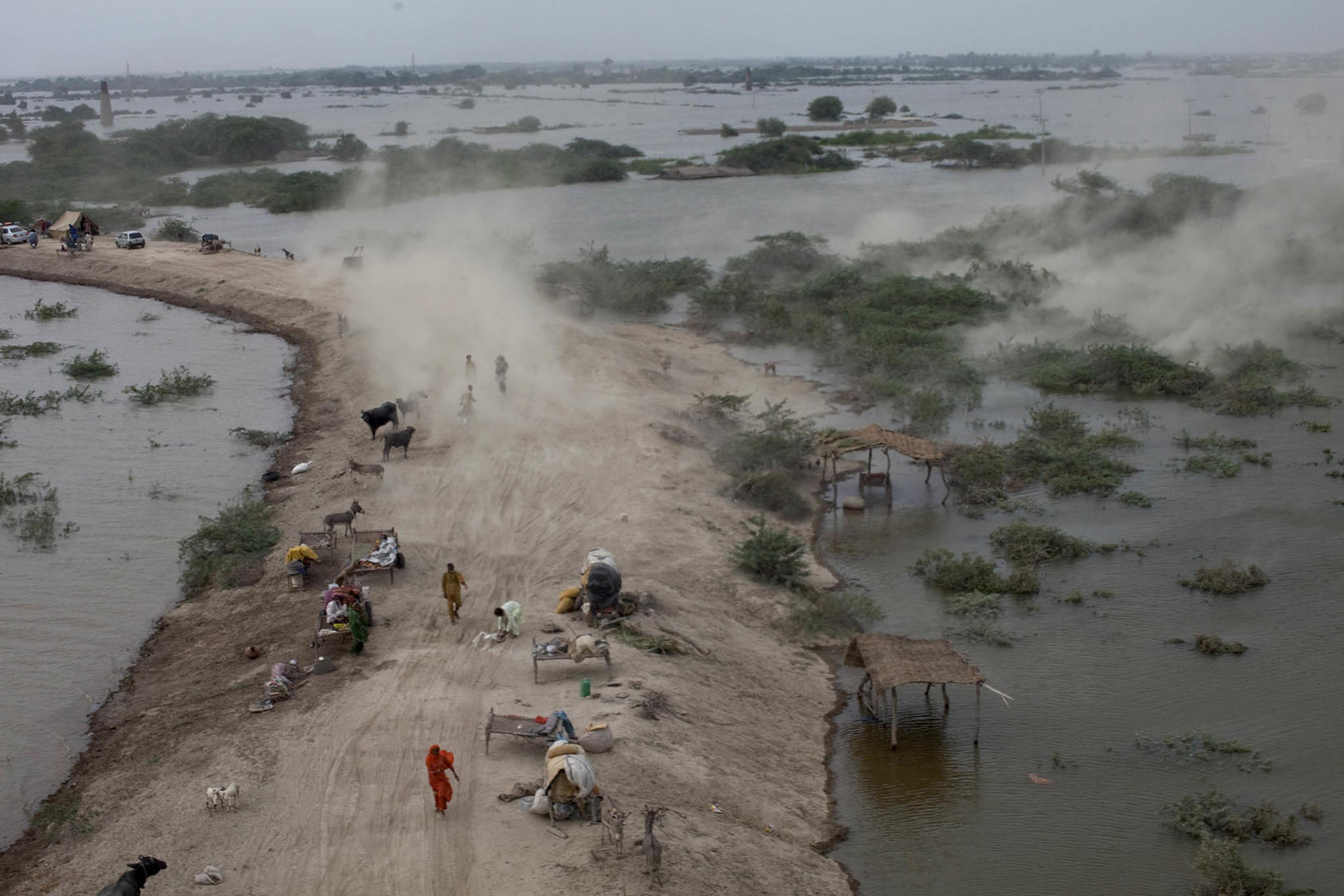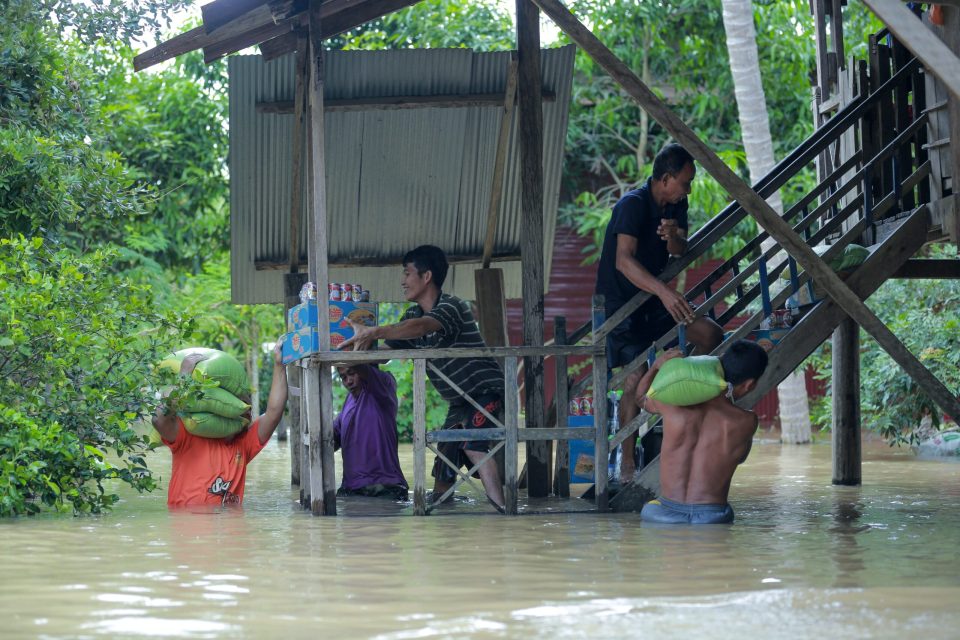Floods in Bangladesh are caused by the unusual swelling of water that overflows the banks of rivers, submerging a vast area of land. This annual river flooding is a result of snowmelt water from the Himalayan mountains as well as heavy monsoon rains, deforestation, and increasing urban areas.
The consequences are severe, with floods causing damage to crops, livestock, infrastructure, and houses, leading to loss of income, food shortages, displacement, and making many people homeless.

Credit: www.usip.org
The Devastating Impact Of Floods In Bangladesh
The devastating impact of floods in Bangladesh is felt across various aspects of society. Firstly, the loss of properties and infrastructure is a major consequence of these natural disasters. The overflowing rivers submerge vast areas of land, causing damage to homes, buildings, and roads.
Another significant impact is the displacement of people. When floods occur, communities are forced to evacuate their homes and seek temporary shelter in relief camps. This displacement not only disrupts their daily lives but also poses challenges in terms of access to basic necessities and healthcare.
Furthermore, floods have a detrimental effect on agriculture and food security. Crops and livestock are destroyed, leading to a loss of income and food shortages. The agricultural sector, which plays a vital role in the country’s economy, suffers greatly during these calamities.
Causes Of Flooding In Bangladesh
Flooding in Bangladesh is a recurring and devastating natural disaster. The causes of flooding in Bangladesh can be attributed to several factors.
Firstly, heavy monsoon rains play a significant role in causing floods. During the monsoon season, which lasts from June to September, the country experiences intense rainfall, resulting in the overflow of rivers and submergence of vast areas of land.
Secondly, the meltwater from the Himalayas adds to the volume of water in the rivers flowing through Bangladesh. The melting snow and glaciers contribute to the already swollen rivers, exacerbating the potential for flooding.
Thirdly, deforestation has played a role in aggravating the impact of floods. The clearing of forests for agriculture and urbanization reduces the natural ability of forests to absorb water, leading to increased runoff and higher river levels.
Lastly, urbanization has further amplified the risk of flooding in Bangladesh. The rapid expansion of cities and towns has resulted in the construction of buildings, roads, and other infrastructure, which disrupts the natural flow of water and contributes to higher flood levels.
In conclusion, a combination of heavy monsoon rains, meltwater from the Himalayas, deforestation, and urbanization contribute to the frequent and devastating floods in Bangladesh.
The Worst Floods In Bangladesh History
| Floods in Bangladesh Composition |
|---|
The Worst Floods in Bangladesh HistoryBangladesh is a riverside country that encounters annual river flooding due to various factors. Some of the historical floods that have occurred in Bangladesh have had significant impacts on the country and its people. These floods, caused by reasons such as meltwater from the Himalayas, heavy monsoon rains, heavy deforestation, and increasing urban areas, have led to widespread devastation. Comparison of major flood eventsOver the years, Bangladesh has experienced several major flood events that have caused immense damage and loss. For example, the worst flood in Bangladesh history, which affected the whole country, resulted in the submerging of vast areas of land, cutting off communication, and disrupting normal activities for a long time. Many people were left homeless, and the impact on crops, livestock, infrastructure, and houses led to severe food shortages, displacement, and loss of income. Lessons learned from past floodsThe recurring nature of floods in Bangladesh has prompted the country to learn from past experiences. Efforts are being made to mitigate the impact of floods through measures such as building embankments, improving early warning systems, promoting afforestation, and constructing flood-resistant infrastructure. These lessons learned from historical floods are essential in better preparing the country for future flood events. |
Frequently Asked Questions On Floods In Bangladesh Composition
How Are Floods Caused In Bangladesh?
Floods in Bangladesh are caused by the swelling of rivers, overflowing their banks and submerging a large area of land. This is due to meltwater from the Himalayas, heavy deforestation, heavy monsoon rains, and increasing urbanization. Floods lead to damage to crops, livestock, infrastructure, and homes, causing income loss, food shortages, and displacement.
How Flooding Affects People In Bangladesh?
Floods in Bangladesh impact millions, causing damage to crops, livestock, infrastructure, and homes. This leads to income loss, food shortages, and displacement for the affected population. The annual river flooding is caused by snowmelt water from the Himalayas, heavy deforestation, heavy monsoon rains, and urbanization.
Q: What Are The Causes Of Flooding In Bangladesh?
A: Flooding in Bangladesh is caused by meltwater from the Himalayas, heavy deforestation, heavy monsoon rains, and the increasing urban areas. These factors contribute to the unusual swelling of water that overflows the river banks and submerges a vast area of land.
Q: How Do Floods In Bangladesh Affect People?
A: Floods in Bangladesh cause significant damage to crops, livestock, infrastructure, and houses. This leads to loss of income, food shortages, and displacement of people. The devastating impact of floods affects the lives and livelihoods of millions of people in Bangladesh.
Conclusion
The devastating impact of floods in Bangladesh is evident through the millions of people who are affected every year. With heavy monsoon rains, meltwater from the Himalayas, and increasing urban areas, the country is prone to severe flooding. The recent floods in Bangladesh resulted in the entire country being submerged, leading to loss of homes, infrastructure, and disrupted livelihoods.
The damage caused by floods, including crop destruction and displacement, creates a cycle of loss of income and food shortages. It’s crucial for effective measures to be implemented to mitigate the causes and impacts of floods in Bangladesh.

